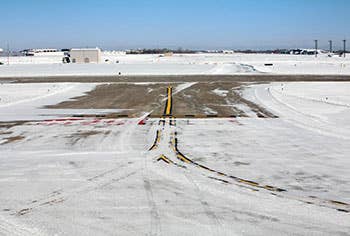
Dan Moore
For many parts of the country, spring is here or at least it's getting close. But winter conditions still prevail in some areas. The northeast got hit hard last week, resulting in a Delta Airlines MD-88 ending up on the side of the runway. Water and snow have a great impact on landing performance. Here are some guidelines that you can follow to help you stay on the tarmac.
The landing distances published in the pilot's operating handbook for various density altitudes are based on dry conditions and test pilot skills. Regardless of how good the conditions are, you should not attempt to land at a runway that is as short as the published takeoff and landing distances. You should know your limits and add a few hundred feet for good measure even if the surface is dry.
The Flight Safety Foundation's Approach and Landing Accident Reduction Tool Kit provides actual figures to use as a guide for contaminated runways. For wet runways, multiply the landing distance by a factor of 1.3 to 1.4. For standing water or slush, multiply by 2.0 to 2.3. Snow covered runways should use a factor of 1.6 to 1.7. And with icy runways, the landing distance could be 3.5 to 4.5 times longer than normal.
Of course, other conditions such as the slope of the runway and winds must be considered as well. Once you have figured out what the minimum safe landing distance would be for the airplane under the current conditions, the FAA recommends that you add a minimum of 15 percent as an additional safety margin.
In other words, if your normal landing distance is 1,000 feet and you plan to land in icy conditions, you should not attempt the landing unless the runway is a minimum of 5,175 feet.
Get exclusive online content like this delivered straight to your inbox by signing up for our free enewsletter.

Sign-up for newsletters & special offers!
Get the latest FLYING stories & special offers delivered directly to your inbox






